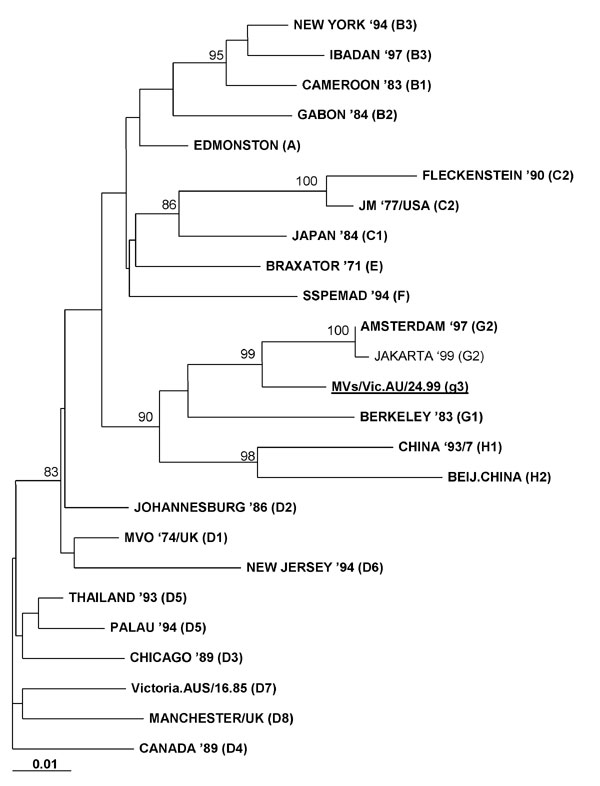Volume 8, Number 7—July 2002
Dispatch
Novel Measles Virus Genotype, East Timor and Australia
Figure

Figure. Phylogenetic analysis with the Phylip software program of DNAdist (maximum likelihood/neighbor-joining, 1000 bootstrap cycles) of the carboxyl-terminal 456-bp nucleoprotein (N) gene sequence of measles virus/Vic.AU/24.99 circulating in Australia and East Timor. World Health Organization–designated prototype strains are shown in bold, and the proposed new g3 genotype is shown in bold and underlined. Jakarta 1999 (G2) has also been included to show the difference between the clade G viruses. Statistically significant bootstrap values (>80%) are indicated. Scale (0.01) indicates nucleotide substitutions per site.
Page created: July 16, 2010
Page updated: July 16, 2010
Page reviewed: July 16, 2010
The conclusions, findings, and opinions expressed by authors contributing to this journal do not necessarily reflect the official position of the U.S. Department of Health and Human Services, the Public Health Service, the Centers for Disease Control and Prevention, or the authors' affiliated institutions. Use of trade names is for identification only and does not imply endorsement by any of the groups named above.